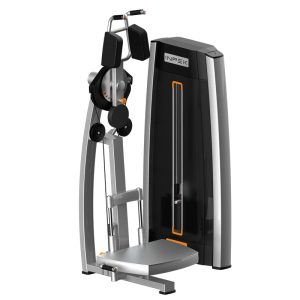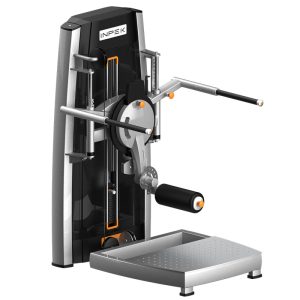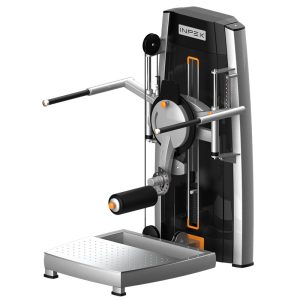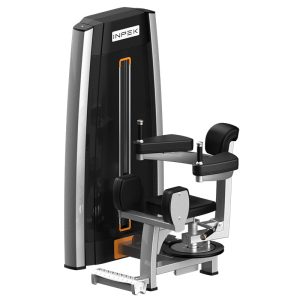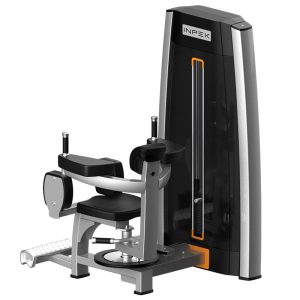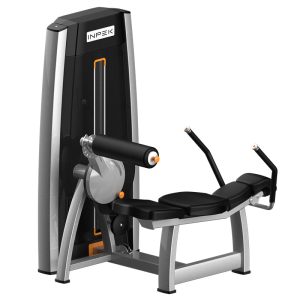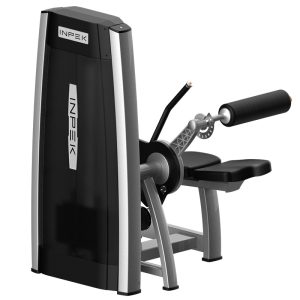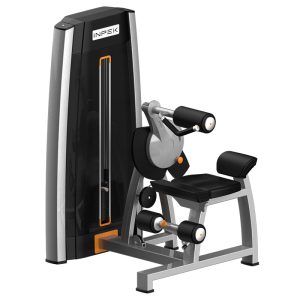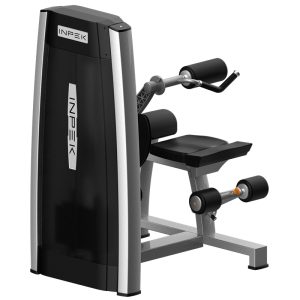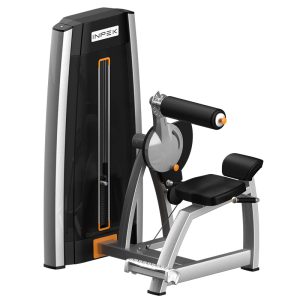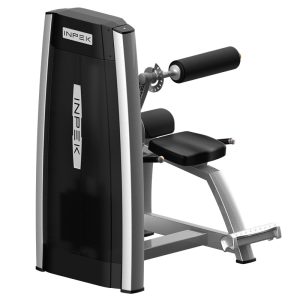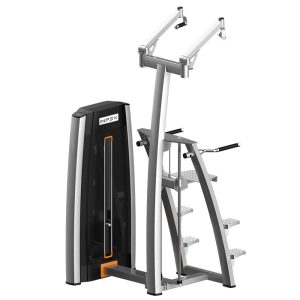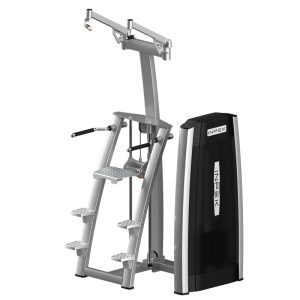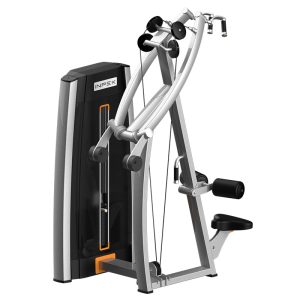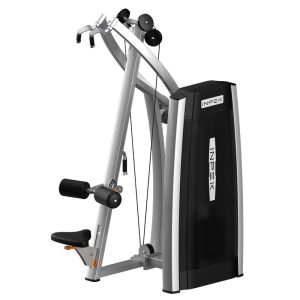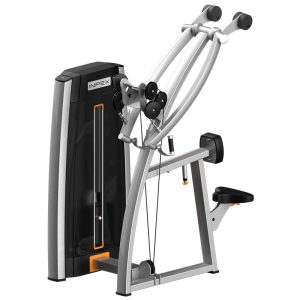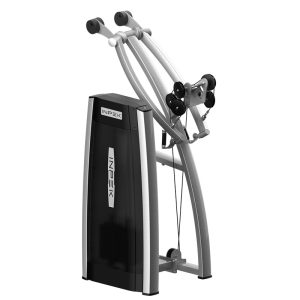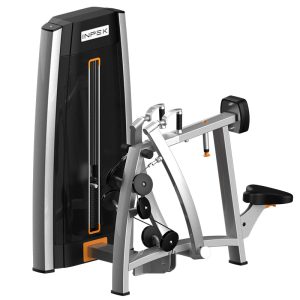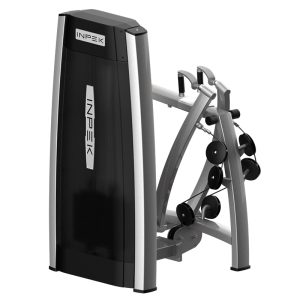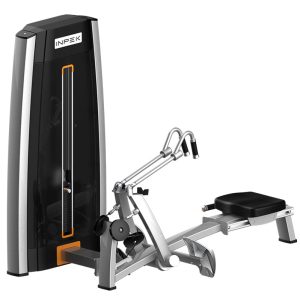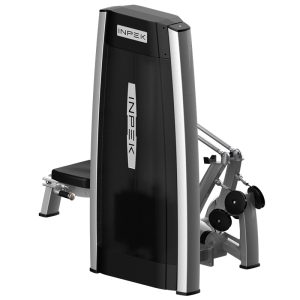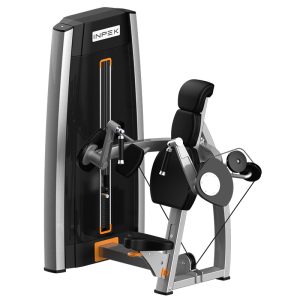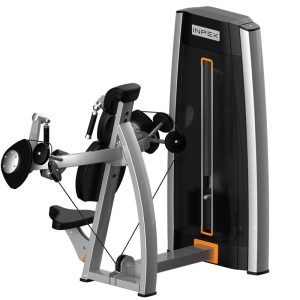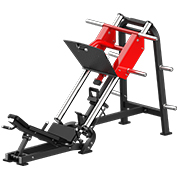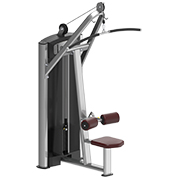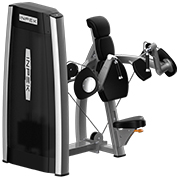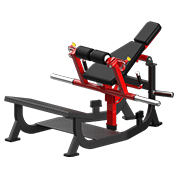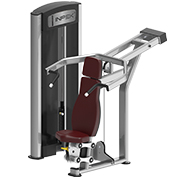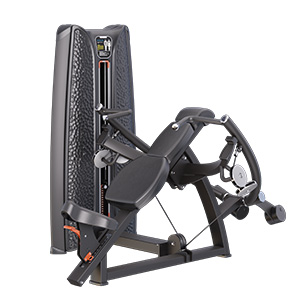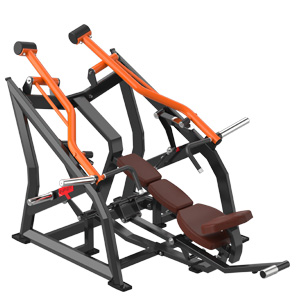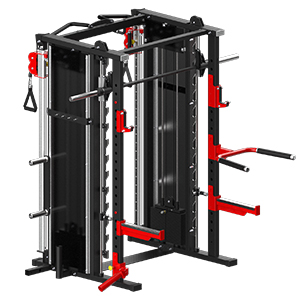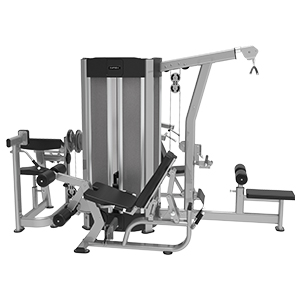Inpek Fitness Supply Chest Press Machines
- Home
- /
- Chest press machines
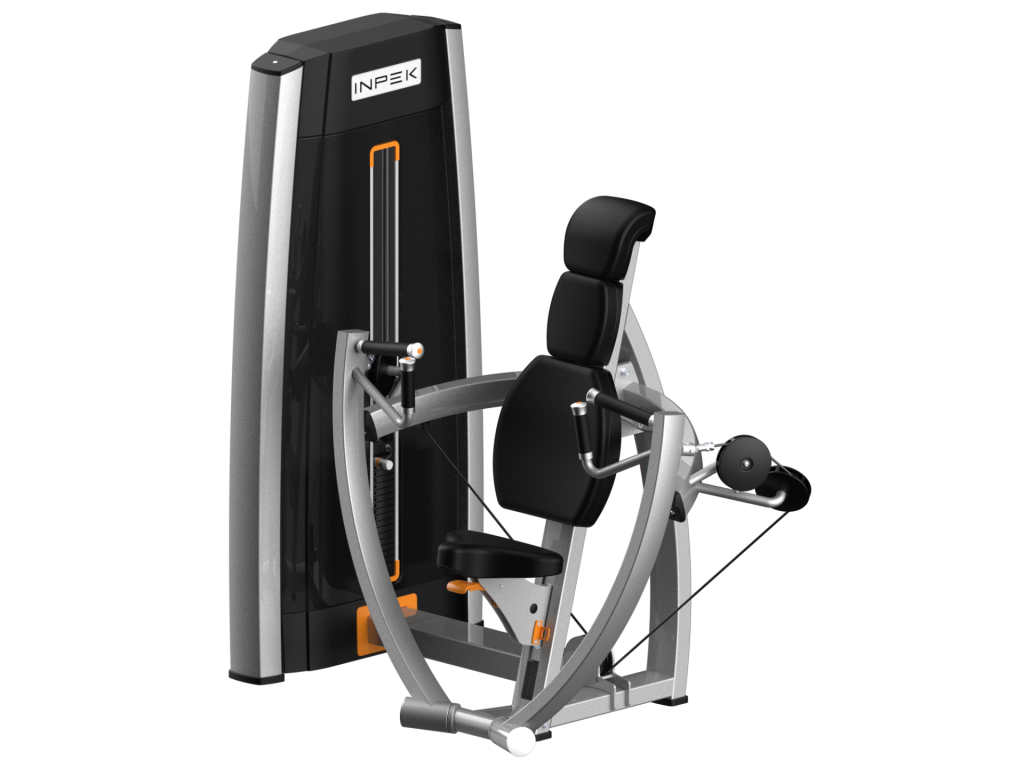
Designed for strength, stability, and versatility, our high-quality chest press machines will take your upper body workouts to the next level. Made of heavy-duty steel with a resilient powder-coated finish that is sweat- and corrosion-resistant, our machines are built to withstand the most intense training. With adjustable weight sets and customizable height settings, our machines offer the same range of motion as free weights, ensuring a flexible and effective workout. Strengthen your pectoral muscles, work your rear deltoids, and perform a variety of chest press exercises with confidence and control. Not only are our chest press machines fully functional, they are also easy to assemble so you can start training right away. Whether you want to build muscle, improve endurance, or increase overall upper body strength, our machines offer the perfect balance of stability and flexibility to support your fitness journey.
With adjustable seat heights and weight sets to suit all fitness levels, our machines ensure a customizable and effective workout. At Inpek Fitness, we have nearly three decades of design and manufacturing expertise to provide high-quality chest press machines that combine functionality, durability, and performance, all designed to help you achieve your strength training goals with precision and ease. Plus, with our fast global shipping and same-day shipping on in-stock items, you can get started training faster.

Types of Chest Press Machines – Find the Perfect Fit for Your Gym
When it comes to chest press equipment, there are several types to choose from, each catering to different fitness needs and gym setups. Here’s a breakdown of the most popular types of chest press machines:
Seated Chest Press Machine
Design: Features a seated position with a backrest for support.
Weight Limit: Up to 500 lbs
Price Range: $1,200 – $2,500
Suitable For: Beginners and intermediate users
Advantages: Provides stability and support, making it ideal for users who are new to chest exercises.
Incline Chest Press Machine
Design: Adjustable bench set at an incline to target the upper chest.
Weight Limit: Up to 600 lbs
Price Range: $1,500 – $3,000
Suitable For: Intermediate to advanced users
Advantages: Focuses on the upper pectoral muscles, offering a more comprehensive chest workout.
Decline Chest Press Machine
Design: Adjustable bench set at a decline to target the lower chest.
Weight Limit: Up to 600 lbs
Price Range: $1,500 – $3,000
Suitable For: Advanced users
Advantages: Emphasizes the lower pectoral muscles, providing a balanced chest development.
Chest Fly Machine
Design: Features arm pads that move in a butterfly motion.
Weight Limit: Up to 400 lbs
Price Range: $1,000 – $2,000
Suitable For: All fitness levels
Advantages: Isolates the chest muscles, offering a unique and effective workout.
Whether you’re looking for a chest bench press machine or a versatile chest push machine, Inpek Fitness offers a variety of options to suit your needs.
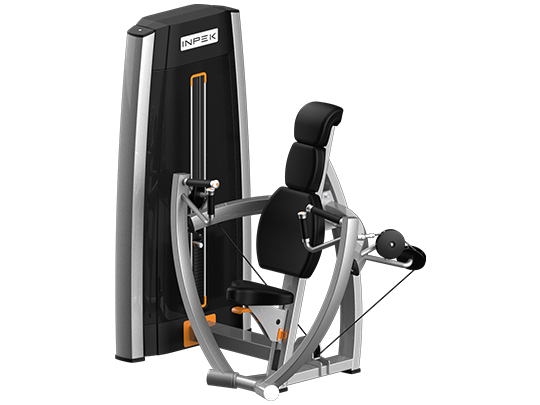
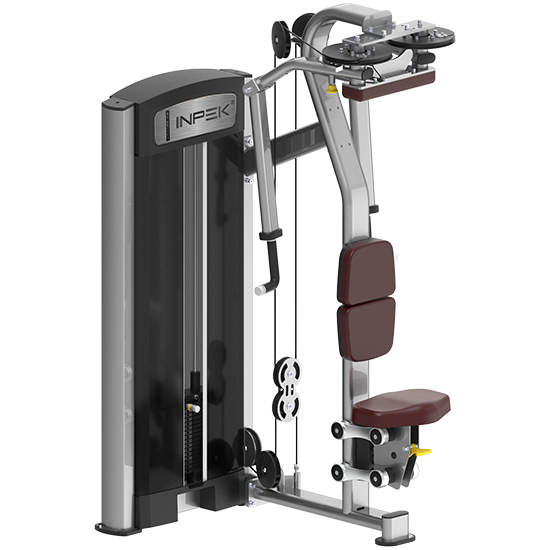
Inpek Fitness Manufacturers Provide Various Types of Chest Press Machines and Support Customized Services
Inpek Fitness is a leading manufacturer of high-quality chest press machines, offering a diverse range of equipment to meet the unique needs of gyms, fitness centers, and individual users. Whether you need machines for commercial facilities, Inpek Fitness provides durable, innovative solutions. Additionally, the company supports customization services, allowing customers to tailor machines based on space, design, weight capacity, and user preferences. This guide explores the different types of chest press machines available and key factors to consider when selecting the right equipment.
Wide Range of Chest Press Machines
Inpek Fitness offers various types of chest press machines designed to accommodate different training styles, fitness levels, and user preferences. Each machine type targets the chest muscles effectively while providing unique features to enhance workout efficiency.
Selectorized Chest Press Machines
Selectorized machines use a weight stack with a pin-based selection system, making them ideal for both beginners and experienced users.
- Ease of Use: The pin-based system allows quick weight adjustments, making it convenient for multiple users in a commercial gym setting.
- Safety Features: The guided motion reduces the risk of injury, making it suitable for users with limited experience.
- Muscle Engagement: Provides controlled resistance, ensuring consistent muscle activation throughout the movement.
Plate-Loaded Chest Press Machines
These machines require users to manually load weight plates, making them ideal for advanced strength training.
- Adjustable Resistance: Users can add or remove plates to match their strength level, providing greater flexibility in progressive overload training.
- Durability: Built with heavy-duty steel, these machines are designed for high-performance training and long-term use.
- Free-Weight Feel: Mimics the resistance and movement patterns of traditional bench presses while offering additional stability.
Incline, Decline, and Flat Chest Press Machines
Inpek Fitness provides machines with different bench angles to target various areas of the chest.
- Incline Chest Press: Focuses on the upper chest and shoulders, helping users build a more defined upper-body physique.
- Decline Chest Press: Emphasizes the lower portion of the chest, reducing strain on the shoulders.
- Flat Chest Press: Offers balanced activation of the entire chest muscle group, making it a staple for comprehensive chest training.
Customized Chest Press Machine Services
Recognizing that different gyms and facilities have specific needs, Inpek Fitness provides customization options to help customers get the perfect equipment for their space and clientele.
Tailored Design and Branding
Customization allows clients to modify the appearance of machines to match their gym’s theme and branding.
- Color Options: Choose from a variety of frame and upholstery colors to align with your gym’s aesthetic.
- Logo and Branding: Incorporate your gym’s logo onto the machine for a personalized touch.
- Ergonomic Adjustments: Modify seat height, handle positioning, and range of motion settings to improve user comfort.
Size and Space Adaptation
Gyms have varying space constraints, and Inpek Fitness ensures that machines fit seamlessly into different environments.
- Compact Models: Ideal for small fitness studios or gyms where space is limited.
- Commercial-Grade Machines: Designed for high-traffic gyms that require larger, more robust equipment.
Weight and Resistance Customization
- Adjustable Weight Ranges: Machines can be tailored to offer different resistance levels based on user needs.
- Advanced Resistance Mechanisms: Options such as hydraulic resistance or isokinetic features are available for specialized training programs.
Factors to Consider Before Purchasing a Chest Press Machine
Choosing the right chest press machine requires careful evaluation of several factors to ensure it meets the needs of your gym and users.
Space Requirements
Before purchasing, measure the available space to ensure the machine fits comfortably without overcrowding your facility.
- Consider Clearance Space: Allow enough room for users to move freely around the machine.
- Multiple Machine Layouts: Plan the positioning of different machines to create an efficient gym setup.
Budget and Cost-Effectiveness
Investing in a chest press machine should balance cost with durability and functionality.
- Compare Prices and Features: Assess different models to find the best value for your budget.
- Long-Term Investment: High-quality machines may have a higher upfront cost but provide better longevity and performance.
User Needs and Versatility
Select a machine that accommodates a broad range of users, from beginners to advanced athletes.
- Adjustable Settings: Machines with customizable seat positions and resistance levels can cater to different fitness levels.
- Multi-Function Machines: Some models offer dual or multi-exercise capabilities to maximize training options.
Weight Capacity and Durability
Ensure the machine can handle the required weight loads without compromising safety.
- Heavy-Duty Construction: Opt for machines made with reinforced steel for durability.
- High Weight Limits: Essential for gyms with powerlifters or bodybuilders who require heavy resistance.
Inpek Fitness offers a diverse range of chest press machines, from selectorized and plate-loaded models to incline, decline, and flat variations. With a strong focus on quality, customization, and user experience, these machines cater to different fitness levels and facility requirements. By considering factors such as space, budget, durability, and user needs, gym owners can make an informed decision and provide their clients with a superior strength training experience.
How to Use Chest Press Machines – Steps, Posture, Variations, and Common Mistakes
Using a chest press machine correctly is essential for maximizing muscle engagement, preventing injuries, and achieving effective upper body strength development. This guide provides a detailed breakdown of the proper steps to perform the exercise, the ideal posture to maintain throughout, variations to target different areas of the chest, and common mistakes to avoid. By following these instructions, you can improve your workout efficiency and build a stronger, more balanced chest.
Correct Posture and Steps
Maintaining proper posture and executing the movement with controlled technique ensures that the chest press machine effectively targets the chest, shoulders, and triceps while minimizing the risk of injury.
Positioning on the Machine
- Sit on the machine with your back firmly against the backrest to maintain spinal alignment.
- Place your feet flat on the floor, shoulder-width apart, ensuring stability.
- Adjust the seat height so that the handles align with the middle of your chest—too high or too low can reduce effectiveness and strain the shoulders.
Grip and Hand Placement
- Use an overhand grip (palms facing forward) to grasp the handles firmly.
- Your elbows should form a 90-degree angle at the starting position to ensure proper muscle activation.
- Keep your wrists straight and in line with your forearms to prevent unnecessary strain.
Performing the Movement
- Engage your core and press the handles forward in a smooth, controlled motion.
- Fully extend your arms without locking your elbows to maintain joint safety.
- Pause for a brief second at the top, then slowly lower the handles back to the starting position, controlling the weight throughout.
Breathing Technique
- Exhale as you push the handles forward, engaging your chest muscles.
- Inhale as you return to the starting position, preparing for the next repetition.
- Proper breathing helps stabilize your core and improves overall performance.
Variations of the Chest Press Machine
To target different areas of the chest and improve overall muscle development, various adjustments and modifications can be made to the chest press machine exercise.
Incline Chest Press
- Targeted Muscles: Focuses on the upper chest and shoulders.
- How to Perform: Adjust the bench to an incline position (around 30–45 degrees). Perform the movement as usual, feeling the tension shift to the upper pectoral muscles.
- Best For: Those looking to develop upper chest strength and definition.
Decline Chest Press
- Targeted Muscles: Emphasizes the lower chest.
- How to Perform: Adjust the seat to a declined position, with the handles positioned slightly lower than chest level. Push the handles forward while keeping your core engaged.
- Best For: Enhancing lower chest development and reducing shoulder strain.
Single-Arm Chest Press
- Targeted Muscles: Improves unilateral strength, balance, and coordination.
- How to Perform: Perform the exercise with one arm at a time while keeping the other arm stationary. This helps correct muscular imbalances.
- Best For: Athletes or individuals who want to focus on each side of the chest separately for better muscle symmetry.
Common Mistakes to Avoid
To ensure a safe and effective workout, it’s crucial to avoid these common errors that can lead to poor muscle activation or potential injuries.
Arching the Back
- Issue: Excessively arching your back can shift the workload away from the chest and increase strain on the lower back.
- Solution: Keep your back pressed against the backrest and engage your core for stability.
Using Momentum Instead of Muscle Control
- Issue: Swinging or using momentum reduces muscle activation and increases injury risk.
- Solution: Perform slow, controlled repetitions, focusing on engaging the chest muscles throughout the movement.
Overloading with Too Much Weight
- Issue: Using excessive weight can compromise form, leading to improper muscle engagement and joint stress.
- Solution: Start with a manageable weight, master the technique, and progressively increase resistance as strength improves.
Locking the Elbows at Full Extension
- Issue: Locking the elbows can place excessive stress on the joints and reduce continuous tension on the muscles.
- Solution: Keep a slight bend in the elbows at the top of the movement to maintain muscle engagement and joint safety.
Using a chest press machine correctly involves maintaining proper posture, following controlled movement patterns, and avoiding common mistakes. Additionally, incorporating variations such as incline, decline, and single-arm presses can help target different areas of the chest for balanced development. By adhering to these guidelines, you can ensure a safe, effective, and results-driven chest workout.
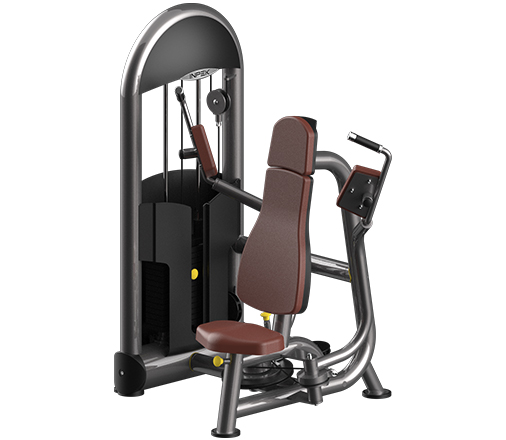
What Muscles Are Mainly Targeted by Chest Press Machines
Pectoralis Major – The Primary Mover
The pectoralis major is the largest and most prominent muscle of the chest, making it the primary target of the chest press machine. This muscle plays a crucial role in pushing movements, contributing to horizontal adduction, flexion, and internal rotation of the shoulder.
- Sternal Head (Lower Fibers): This portion of the pectoralis major is more engaged when the press follows a downward angle or when the arms extend outward.
- Clavicular Head (Upper Fibers): The upper fibers become more active when the press follows a slight incline, contributing to lifting and pressing movements that engage the shoulders.
By engaging both portions of the pectoralis major, the chest press machine effectively develops chest size, strength, and endurance.
Pectoralis Minor – Supporting Shoulder Stability
Located beneath the pectoralis major, the pectoralis minor assists in stabilizing and controlling shoulder movement during the pressing motion. While it is not the main driver of the exercise, it plays a vital role in maintaining shoulder positioning and posture.
- This muscle helps with scapular protraction, meaning it moves the shoulder blades forward as you push.
- A strong pectoralis minor contributes to overall shoulder stability, reducing the risk of injuries.
Anterior Deltoids – Front Shoulder Engagement
The anterior deltoid, or front shoulder muscle, is heavily recruited during the chest press machine exercise, as it assists in the pressing motion and shoulder flexion.
- It works alongside the pectoralis major to push the weight forward and upward.
- The engagement level of the anterior deltoids depends on arm position and grip width—a narrower grip places more emphasis on the shoulders.
Strengthening the anterior deltoids not only improves pressing strength but also enhances overall shoulder function, aiding in various pushing and lifting movements.
Triceps Brachii – Arm Extension and Lockout Strength
The triceps brachii, located at the back of the upper arm, plays a critical role in extending the elbows during the pressing phase of the exercise.
- It is responsible for the final phase of the press, locking out the arms at the top of the movement.
- A stronger triceps improves overall pressing power, contributing to both machine-based and free-weight chest presses.
Although the triceps are not the primary focus of the chest press machine, their involvement is significant in developing arm strength and endurance.
Serratus Anterior – Shoulder Blade Stabilization
The serratus anterior is a lesser-known but essential muscle that aids in stabilizing the shoulder blades during pressing movements.
- It prevents excessive scapular winging, ensuring smooth and controlled movement.
- A well-developed serratus anterior improves pressing mechanics and reduces strain on the shoulders.
This muscle is particularly important for maintaining proper form, preventing injuries, and ensuring full range of motion during the chest press.
Fitness Equipment with Similar Functions to Chest Press Machines
When training the chest, the chest press machine is a popular choice due to its stability and ease of use. However, various other fitness equipment can provide similar muscle activation, offering versatility to workouts and accommodating different training preferences. Whether you prefer free weights, bodyweight exercises, or cable machines, these alternatives can effectively strengthen the chest, shoulders, and triceps. Below, we explore equipment that serves similar functions to the chest press machine and how each can be integrated into a well-rounded strength-training routine.
Dumbbell Bench Press
The dumbbell bench press is a free-weight alternative to the chest press machine, allowing for a greater range of motion and improved muscle activation.
How It Works
- Lie on a flat bench while holding a dumbbell in each hand, positioned at chest level.
- Press the dumbbells upward until your arms are fully extended, then slowly lower them back to the starting position.
- Maintain control throughout the movement to maximize muscle engagement.
Benefits
- Increased Range of Motion: Dumbbells allow for a deeper stretch at the bottom of the movement, leading to better muscle activation.
- Improves Stability and Balance: Engages stabilizer muscles, enhancing overall strength and coordination.
- Reduces Strength Imbalances: Each arm works independently, preventing one side from compensating for the other.
Barbell Bench Press
A fundamental chest-building exercise, the barbell bench press allows for heavier lifting compared to the chest press machine.
How It Works
- Lie flat on a bench and grip the barbell slightly wider than shoulder-width.
- Lower the barbell to chest level in a controlled manner.
- Push the barbell back up until your arms are fully extended.
Benefits
- Maximal Strength Development: Ideal for progressive overload and building raw power.
- Engages Multiple Muscle Groups: Works the chest, shoulders, and triceps effectively.
- Allows for Strength Measurement: A benchmark exercise for upper-body strength assessment.
Chest Fly Machine
The chest fly machine isolates the chest muscles more than a chest press machine, making it an effective alternative for enhancing muscle definition.
How It Works
- Sit on the machine with your back against the pad and grip the handles.
- Slowly bring the handles together in a controlled arc motion until they meet in front of you.
- Gradually return to the starting position while maintaining tension in the chest.
Benefits
- Isolation of Chest Muscles: Reduces involvement of the triceps and shoulders, focusing solely on the pectorals.
- Improves Chest Flexibility: Encourages a deeper stretch in the muscle fibers.
- Safer for Beginners: Guided motion reduces injury risk while still providing muscle activation.
Push-Up Bars
Push-up bars are an excellent bodyweight training tool that enhances chest development while reducing wrist strain.
How It Works
- Grip the push-up bars and position yourself in a plank position with hands shoulder-width apart.
- Lower your chest toward the ground while keeping your elbows close to your body.
- Push back up to the starting position while maintaining core stability.
Benefits
- Bodyweight Training: No need for heavy equipment; can be done anywhere.
- Engages Core Muscles: Strengthens not just the chest but also the core and stabilizer muscles.
- Reduces Wrist Strain: The elevated handles improve wrist positioning, making push-ups more comfortable.
Cable Crossover Machine
The cable crossover machine offers adjustable resistance and multiple angles for targeting the chest muscles dynamically.
How It Works
- Stand between two cable stacks with handles set at the desired height.
- Step slightly forward and pull the cables toward the center in an arcing motion, squeezing the chest muscles.
- Slowly return to the starting position, maintaining control of the cables.
Benefits
- Continuous Tension: Unlike free weights, cables provide constant resistance throughout the movement.
- Versatile Adjustments: Can be set to high, mid, or low angles to target different areas of the chest.
- Safe and Joint-Friendly: Smooth motion reduces unnecessary joint strain.
While the chest press machine is a convenient and effective tool for strengthening the chest, several alternative fitness equipment options can offer variety and additional benefits. Dumbbells and barbells allow for greater range of motion and strength progression, while machines like the chest fly and cable crossover ensure muscle isolation and controlled resistance. Bodyweight exercises, such as push-ups with bars, add functional strength to workouts. By incorporating these alternatives, you can build a more balanced and effective chest training routine.
Chest Press Machines Compared to Dumbbell Chest Press
When choosing between a chest press machine and a dumbbell chest press, it’s important to understand the unique benefits and drawbacks of each. The chest press machine offers stability, ease of use, and controlled movement, making it suitable for various fitness levels. On the other hand, the dumbbell chest press provides greater range of motion, engages stabilizing muscles, and offers better functional strength benefits. By analyzing the advantages and disadvantages in detail, you can determine which option best suits your fitness goals.
Advantages of Chest Press Machines
Chest press machines offer several benefits, particularly for those looking for controlled strength training, reduced injury risk, and easy weight adjustments. These advantages make them a valuable tool for both beginners and experienced lifters.
Stability and Support – Safer and Easier to Use
One of the biggest advantages of a chest press machine is the stability it provides. Unlike free weights, which require balance and coordination, a machine guides the movement, ensuring proper form and reducing the risk of injury.
- The machine follows a fixed path, preventing unnecessary strain on the shoulders and joints.
- Users do not have to worry about stabilizing the weights, making it easier to focus on pressing.
- This feature is especially beneficial for beginners, individuals recovering from injuries, or those who struggle with balance.
Controlled Range of Motion – Better Form and Muscle Activation
Chest press machines are designed to move in a pre-set range of motion, ensuring consistency in every repetition. This controlled movement helps optimize muscle engagement and reduces the risk of improper technique.
- It minimizes the chances of using incorrect form, which can lead to injuries.
- The guided movement allows users to focus on muscle contraction and mind-muscle connection.
- This advantage is particularly useful for isolating the chest muscles without excessive strain on secondary muscles.
Adjustable Resistance – Easy and Efficient Progression
The ability to quickly adjust resistance makes the chest press machine ideal for progressive overload, a key factor in muscle growth and strength development.
- Users can change weights effortlessly by moving a pin or adjusting a dial, unlike dumbbells, which require manually picking up different weights.
- It enables drop sets and quick weight adjustments for different training intensities.
- This convenience makes it an effective tool for both hypertrophy (muscle growth) and endurance training.
Suitable for All Fitness Levels – Accessible for Beginners and Advanced Lifters
The machine’s design makes it accessible for a wide range of users, from those new to weight training to advanced lifters looking to supplement their free-weight workouts.
- Beginners can develop pressing strength without worrying about stabilization.
- Advanced users can use it as a supplementary exercise to target chest muscles with a different form of resistance.
- It provides a safer option for heavy lifting without requiring a spotter.
Disadvantages of Chest Press Machines
Despite their benefits, chest press machines have some limitations, particularly when it comes to functional strength, space requirements, and natural movement patterns.
Limited Functional Carryover – Less Activation of Stabilizing Muscles
One of the biggest drawbacks of chest press machines is that they do not engage stabilizing muscles as effectively as free weights.
- The fixed path of movement reduces the need for coordination and balance, which are crucial for real-life strength applications.
- Free-weight exercises like dumbbell presses improve stabilizer muscle activation, enhancing functional strength for sports and daily activities.
- Since the movement is not as natural as free weights, it may not translate as well to athletic performance or real-world pushing movements.
Space Requirements – Machines Can Be Bulky
Chest press machines require a dedicated space in a gym setup, which can be a limitation for those with restricted workout areas.
- Unlike dumbbells, which are compact and versatile, machines are large and not easily movable.
- Users of small space commercial gyms may find it difficult to accommodate a bench press machine compared to a simple bench and dumbbells.
- In commercial gyms, availability might be an issue, especially during peak hours when machines are in high demand.
Learning Curve – Proper Setup and Form Are Essential
Although machines are generally user-friendly, they still require proper setup and adjustments for effective use.
- Incorrect seat height or hand placement can lead to poor form and reduced muscle engagement.
- Some users may develop muscle imbalances if they rely too much on machines and neglect free weights.
- Understanding how to properly align the body with the machine is important to maximize effectiveness and avoid discomfort.
The choice between a chest press machine and a dumbbell chest press depends on individual goals, experience levels, and training preferences. The chest press machine is ideal for those who prefer stability, controlled movements, and easy weight adjustments. It is especially beneficial for beginners, those recovering from injuries, or lifters who want to isolate the chest muscles without worrying about balance. However, it has limitations in functional strength development and requires proper setup to be effective.
On the other hand, the dumbbell chest press offers greater muscle activation, engages stabilizing muscles, and provides a more natural movement pattern. It is a better choice for those looking to develop functional strength, athletic performance, and overall coordination.
For a well-rounded workout, incorporating both machine and free-weight exercises can help maximize muscle growth, strength, and overall upper-body development.
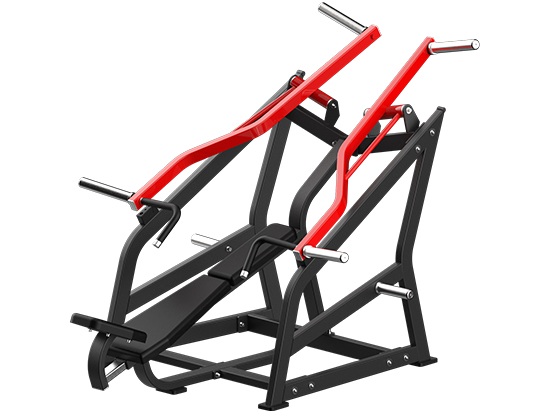
FAQs About Chest Press Machines
Is the chest press machine effective?
Yes, the chest press machine is effective for building chest strength and muscle. It primarily targets the pectoralis major, along with the triceps and anterior deltoids. One of its advantages over free weights is that it provides guided movement, reducing the risk of improper form and lowering the chances of injury. This makes it a great option for beginners, those recovering from injuries, or anyone who wants to isolate the chest muscles without worrying about stabilization. However, while the machine effectively builds strength and muscle, it does not engage stabilizing muscles as much as a barbell or dumbbell bench press. To maximize results, it’s best to combine the chest press machine with free weight exercises like dumbbell presses and push-ups for well-rounded chest development.
What are the disadvantages of the chest press machine?
While the chest press machine is effective, it has some disadvantages. First, it limits natural movement patterns because the machine follows a fixed path, which may not suit everyone’s body mechanics. This can lead to muscle imbalances if used exclusively, as stabilizer muscles are not engaged as much as in free weight exercises. Another downside is that it does not improve functional strength as well as compound movements like barbell bench presses or push-ups, which require more muscle coordination. Additionally, some machines have limited adjustability, which can make it uncomfortable for certain body types. Lastly, over-reliance on machines can hinder overall muscle development if free weights are not incorporated into the routine.
Is it OK to do chest press every day?
It is not ideal to do the chest press every day, as your chest muscles need time to recover and grow. Muscles repair and strengthen during rest periods, and overtraining can lead to fatigue, decreased performance, and potential injury. For optimal chest growth, it’s best to train the chest 2-3 times per week with proper rest days in between. If you want to train daily, vary the intensity—one day could focus on heavy lifting, another on lighter weight and higher reps, and another on endurance or mobility work. Incorporating different chest exercises like push-ups, dumbbell presses, or incline presses can also prevent overuse injuries while promoting balanced muscle development.
Can I build muscle with a chest press machine?
Yes, you can build muscle with a chest press machine. The machine allows for progressive overload, which is the key to muscle growth. By gradually increasing weight and reps, you stimulate hypertrophy (muscle growth) in the pectorals. However, because the machine stabilizes the weight for you, it does not engage supporting muscles as much as free weights. For maximum muscle growth, it’s recommended to combine the chest press machine with dumbbell presses, push-ups, and incline variations. Additionally, ensure you are eating enough protein and calories to support muscle repair and growth.
Why is a chest press machine harder than a bench?
A chest press machine can feel harder than a bench press for several reasons. First, machine resistance can feel heavier because it keeps the tension constant throughout the movement, whereas free weights have natural strength curves with varying resistance. Second, the fixed path of movement may not align perfectly with your body’s natural pressing motion, making it feel awkward or difficult. Third, some machines use different resistance mechanisms, such as pulleys or hydraulic resistance, which may not mimic free weights accurately. However, bench presses engage more stabilizing muscles, so they can feel harder in a different way due to the added need for balance and coordination.
Does chest press lose chest fat?
No, the chest press alone does not directly burn chest fat. Fat loss occurs through a caloric deficit—burning more calories than you consume. While the chest press builds and strengthens the chest muscles, it will not specifically target fat loss in that area. To lose chest fat, focus on overall fat loss through a combination of strength training, cardiovascular exercise, and a proper diet. As you reduce body fat, your chest will become more defined, revealing the muscle underneath. Adding exercises like high-intensity interval training (HIIT) and maintaining a healthy diet will accelerate fat loss.
Can you build chest with chest press?
Yes, the chest press machine effectively builds chest muscle by targeting the pectorals with controlled resistance. It allows for progressive overload, which is essential for muscle growth. However, relying only on the machine may limit overall development, as it does not engage stabilizing muscles as effectively as free weights. To maximize chest growth, incorporate variations like incline chest presses, dumbbell presses, dips, and push-ups to engage the chest from different angles. Combining compound and isolation exercises will lead to a fuller, stronger chest.
Does chest press increase chest size?
Yes, the chest press increases chest size by promoting muscle hypertrophy when done consistently with progressive overload. To grow the chest, focus on 8-12 reps per set with moderate to heavy weight and gradually increase resistance over time. Pairing the chest press with other chest exercises like incline presses, dumbbell flyes, and dips ensures well-rounded chest development. Additionally, proper nutrition, adequate protein intake, and recovery play a crucial role in muscle growth. If done correctly, the chest press machine can significantly contribute to increasing chest size and definition.
Is chest press better than wide chest press?
The standard chest press and the wide chest press both target the pectorals but with slight variations. A wide grip places more emphasis on the outer chest and reduces triceps involvement, making it useful for developing chest width. However, it may put more strain on the shoulders. A narrower grip or standard chest press engages the triceps and inner chest more while providing a greater range of motion. If using a chest press machine, the standard version allows for better muscle activation and is generally safer for the shoulders. For optimal chest development, incorporating both variations can be beneficial—use a wider grip for outer chest focus and a standard grip for overall chest growth.
What weight should I use for chest press?
The right weight depends on your experience level and goals. Beginners should start with a weight that allows for 12-15 reps with good form, typically around 40-60% of their body weight. Intermediate lifters can aim for 8-12 reps at 60-75% of their 1-rep max (1RM), while advanced lifters may train heavier at 4-8 reps with 75-90% of their 1RM. Using a chest press machine makes it easier to progressively overload by increasing weight gradually. If you struggle to complete reps or lose proper form, the weight is too heavy. If you finish sets too easily, increase resistance to continue muscle growth.
Are push-ups better than chest press?
Push-ups and the chest press machine serve different purposes. Push-ups are a bodyweight exercise that engage the core, shoulders, and triceps, while a chest press machine isolates the chest and allows for progressive overload. Push-ups improve functional strength and endurance, while a machine-based chest press builds muscle mass and strength more effectively due to the ability to increase weight. Beginners may find push-ups challenging but can modify them. Advanced lifters benefit from adding weighted push-ups or combining both exercises in their routine. If the goal is muscle hypertrophy, the chest press machine is superior due to its controlled resistance. However, push-ups are still valuable for overall fitness and endurance.
Is a chest press better than a flat bench?
Both exercises are effective, but they have key differences. A flat bench press (using a barbell or dumbbells) recruits more stabilizing muscles, leading to greater overall strength development. The chest press machine, on the other hand, isolates the chest and reduces stabilizer muscle involvement, making it easier to focus on muscle contraction without worrying about balance. If your goal is maximal strength and functional fitness, a flat bench press is better. If you want safer, controlled reps with less risk of injury, a chest press machine is a great alternative, especially for beginners or those recovering from injuries.
What height should chest press machines be?
The seat height on a chest press machine should be adjusted so that the handles align with your mid-to-lower chest when you press. If the seat is too high, the movement may engage more shoulders rather than the chest. If the seat is too low, it can put excessive strain on the shoulders and triceps. The ideal height ensures that your elbows are slightly below shoulder level when starting the press, allowing for a full range of motion while minimizing joint stress. Always adjust the seat before starting and test your position with light weight first.
Does a chest press machine target the upper chest?
Most standard chest press machines focus primarily on the middle and lower chest, not the upper chest. However, some machines have an incline adjustment to shift the emphasis toward the upper pectorals. If your machine does not have this feature, you may need to supplement with incline bench presses, incline dumbbell presses, or incline push-ups to target the upper chest effectively. If your goal is upper chest development, look for an incline chest press machine, which mimics the motion of an incline bench press and activates the clavicular head of the pectoralis major.
How do I maximize my chest press?
To maximize your chest press, focus on proper form, weight progression, and muscle activation. Ensure your seat height is adjusted so that your hands are at mid-chest level when pressing. Use a full range of motion, lowering the handles to just above your chest and fully extending without locking out the elbows. Incorporate progressive overload by gradually increasing the weight while maintaining form. Control your reps—slowly lower the weight and press up with force. Squeeze your chest at the top of each rep for maximum muscle activation. Lastly, vary your grip width and try different angles (e.g., incline machines) to ensure full chest development.
What is another name for a chest press machine?
A chest press machine may also be called a seated chest press, plate-loaded press, horizontal press, or selectorized chest press. Some brands label their machines as “converging chest press” (which mimics natural pressing motion) or “iso-lateral chest press” (which allows each arm to work independently). The function remains the same: to target the pectoral muscles in a controlled pressing movement.
Which chest press machine hits the upper chest?
An incline chest press machine is specifically designed to target the upper chest. It mimics the movement of an incline bench press, shifting emphasis to the clavicular head of the pectoralis major. Some plate-loaded machines also allow for adjustable angles to increase upper chest activation. If your gym only has a flat chest press machine, you can supplement it with incline dumbbell presses or incline push-ups for better upper chest development.
Is bench press better than chest butterfly?
The bench press (whether using a barbell, dumbbells, or a machine) is a compound movement that works the chest, shoulders, and triceps, allowing for greater strength and muscle gains. The chest fly (butterfly machine) is an isolation movement that primarily targets the inner chest, improving muscle definition and stretch. If the goal is muscle size and overall chest strength, the bench press is superior. However, the butterfly machine can be a valuable accessory exercise for chest sculpting and increasing range of motion. The best approach is to combine both in your routine for maximum chest development.
How to Chest Press Correctly?
To perform a chest press correctly on a machine, start by adjusting the seat so the handles align with the middle of your chest. Sit with your back firmly against the pad, feet flat on the floor, and grip the handles with a neutral or slightly wider-than-shoulder-width grip. Engage your core and push the handles forward until your arms are fully extended, but don’t lock out your elbows. Control the movement as you return to the starting position, keeping tension in your chest throughout the exercise. Avoid bouncing the weight or using momentum—focus on a controlled, steady motion. Proper breathing is essential; inhale as you lower the handles and exhale as you press forward. Performing the movement with proper form ensures effective chest muscle engagement while reducing strain on the shoulders and joints. Always start with a moderate weight to master technique before increasing resistance.
What Is the Most Effective Chest Press?
The most effective chest press depends on individual goals and equipment availability. The seated chest press machine is excellent for controlled movement and muscle isolation, making it ideal for beginners or those recovering from injuries. The plate-loaded chest press machine allows for a more natural range of motion and progressive overload, mimicking free-weight presses. The incline chest press machine targets the upper chest more effectively, creating a fuller, more developed look. If strength and hypertrophy are the main goals, machines that allow for heavier weight loads while maintaining a full range of motion tend to be the most effective. Additionally, selecting a machine that provides adjustable grip positions can help target different areas of the chest. For maximum effectiveness, combining different chest press variations ensures balanced chest development.
What Strength Equipment Is Best for a Chest Press?
Several strength training machines and equipment effectively target the chest during a chest press. The plate-loaded chest press machine is one of the best options, as it provides a natural range of motion and allows for progressive overload. The seated chest press machine is great for beginners because of its guided movement and ease of use. Cable chest press machines offer constant tension throughout the movement, improving muscle engagement. Additionally, Smith machines can be used for chest presses, offering stability while still allowing for free-weight-like movement. If the goal is hypertrophy and strength, plate-loaded or selectorized chest press machines with adjustable weight stacks are ideal. Machines with adjustable seat heights and grip positions also help target different areas of the chest, providing a well-rounded workout. Choosing the best equipment depends on experience level, muscle activation goals, and workout preferences.
Which Press Is Best for Chest?
The best chest press depends on your specific training goals. If you aim for overall chest development, the flat chest press machine is the best for balanced muscle growth. If you want to emphasize the upper chest, an incline chest press machine is more effective. For a thicker, more developed lower chest, a decline chest press machine is ideal. Plate-loaded machines are excellent for strength training because they allow heavier loads and mimic natural movement patterns. Cable chest presses provide constant tension, which helps improve muscle endurance and activation. For beginners, a selectorized chest press machine with a fixed range of motion ensures proper form and safety. For best results, incorporating multiple chest press variations into a routine ensures comprehensive chest development. The key is selecting a machine that aligns with your fitness level and target muscle group.
Is Chest Press Better Than Bench Press?
Both chest press machines and bench presses have their advantages. Chest press machines are better for beginners and those who want to isolate the chest without engaging stabilizing muscles. They also reduce injury risk and ensure controlled movement, making them ideal for rehabilitation or targeted muscle growth. On the other hand, bench presses, whether barbell or dumbbell, engage more stabilizing muscles and allow for greater strength gains due to free-weight movement. However, bench pressing requires proper form and can increase injury risk if not performed correctly. If the goal is pure muscle isolation and convenience, a chest press machine is better. If the goal is full upper body strength and functional fitness, bench press is superior. Many athletes incorporate both into their routine to maximize chest development and strength.
How Many Chest Press Should I Do a Day?
The number of chest press repetitions and sets depends on your fitness goals. For muscle growth (hypertrophy), aim for 3–5 sets of 8–12 reps with moderate to heavy resistance. If your goal is strength, perform 4–6 sets of 4–6 reps using heavier weights. For endurance and toning, higher reps (12–15) with lighter weights are ideal. Training volume also depends on overall workout structure. If chest is trained once or twice a week, 12–20 total sets across different exercises is effective. Overtraining can lead to fatigue and injury, so balancing intensity with proper recovery is key. Instead of focusing on daily chest presses, it’s more effective to follow a structured program with rest days between chest workouts.
Is Chest Once a Week Enough?
Training chest once a week can be effective for maintenance, but for optimal muscle growth and strength, twice a week is recommended. Research shows that training a muscle group twice per week leads to better hypertrophy compared to once a week. If you only train chest once a week, ensure you include multiple chest press variations and enough volume (15–20 total sets) to stimulate growth. However, if recovery is slow or you’re a beginner, training chest once per week with intensity can still yield results. Advanced lifters often train chest twice or more per week to continuously progress. A balanced approach includes pressing movements (flat, incline, decline) and accessory exercises like flys and dips to ensure full chest development. If chest is a lagging muscle, increasing frequency while managing recovery can accelerate growth.
Top 10 high-tech manufacturing hubs
End-to-end integrated manufacturing, fully integrated recycling production line
You see more than just a factory
Intelligent steel pipe production line
Next generation laser cutting technology
Intelligent pipe bending process
Intelligent mechanical welding
New generation spraying process system
Delivering superior quality through pre-assembled solutions
Our Valued Clients







Collaborate with Inpek Fitness Experts for Your Commercial Gym Projects
Looking to enhance your gym with premium equipment? Have inquiries or ideas? Complete the form below to engage with our expert team. We’ll work with you to realize your fitness facility goals efficiently and effectively.


